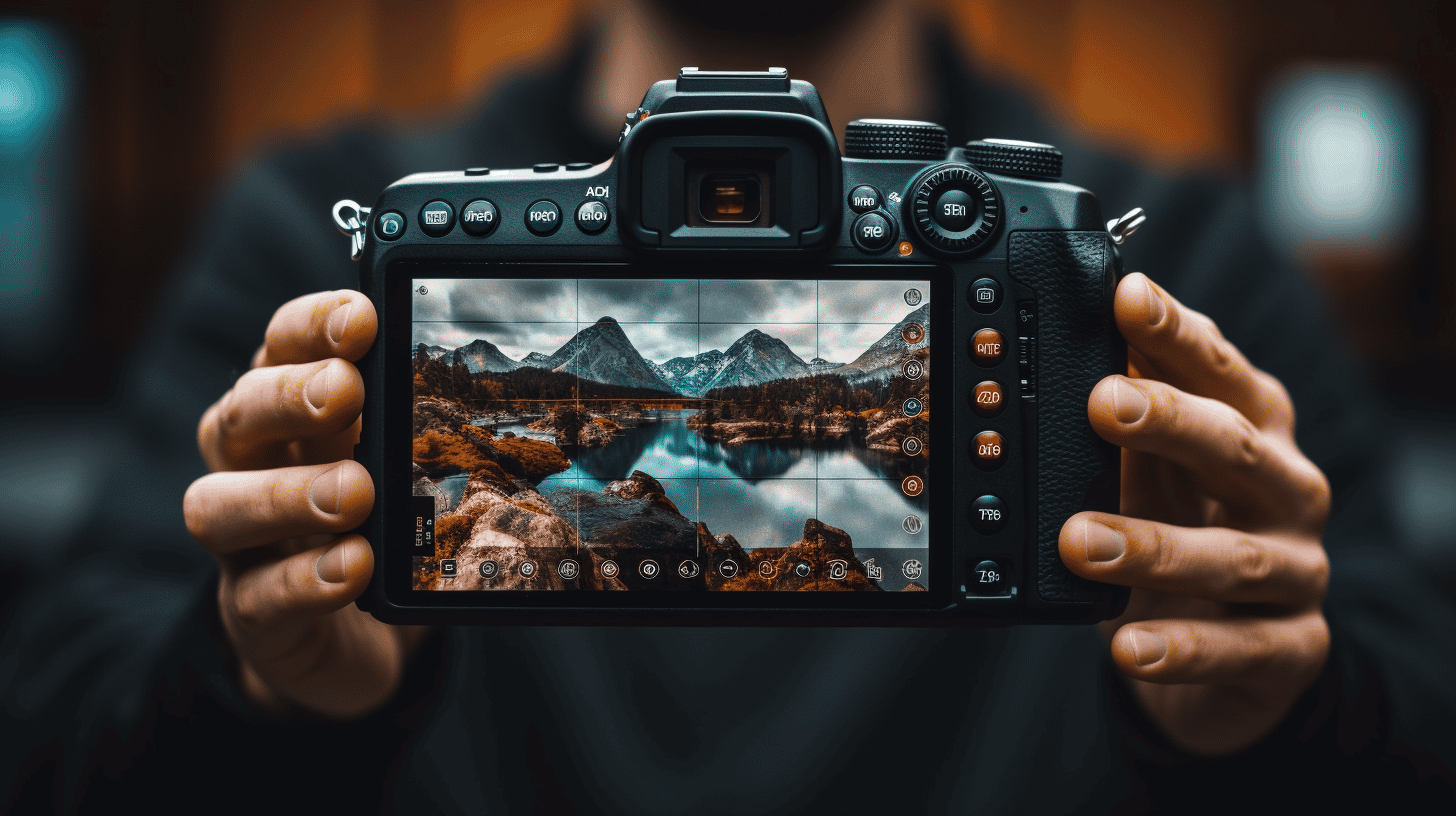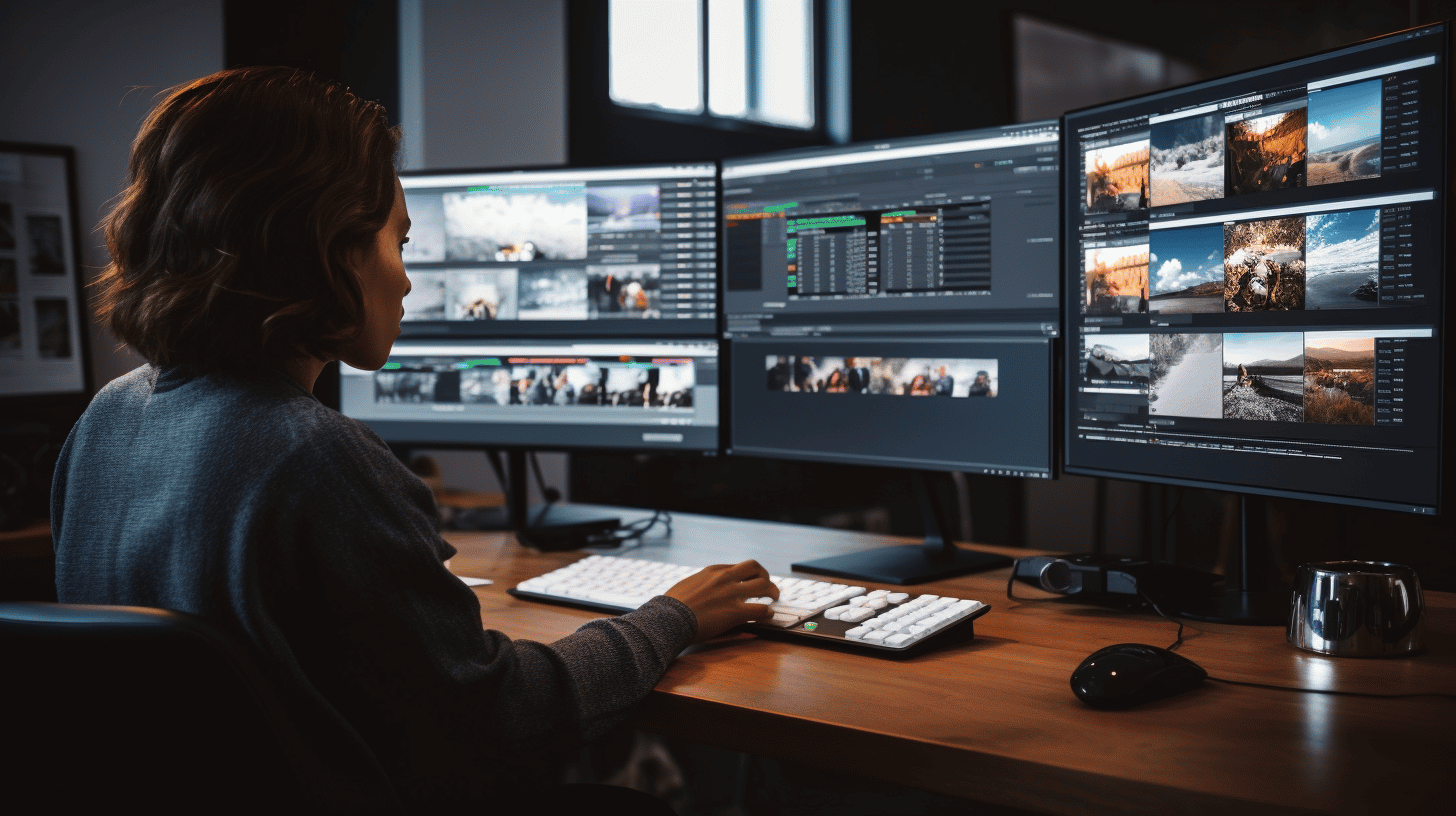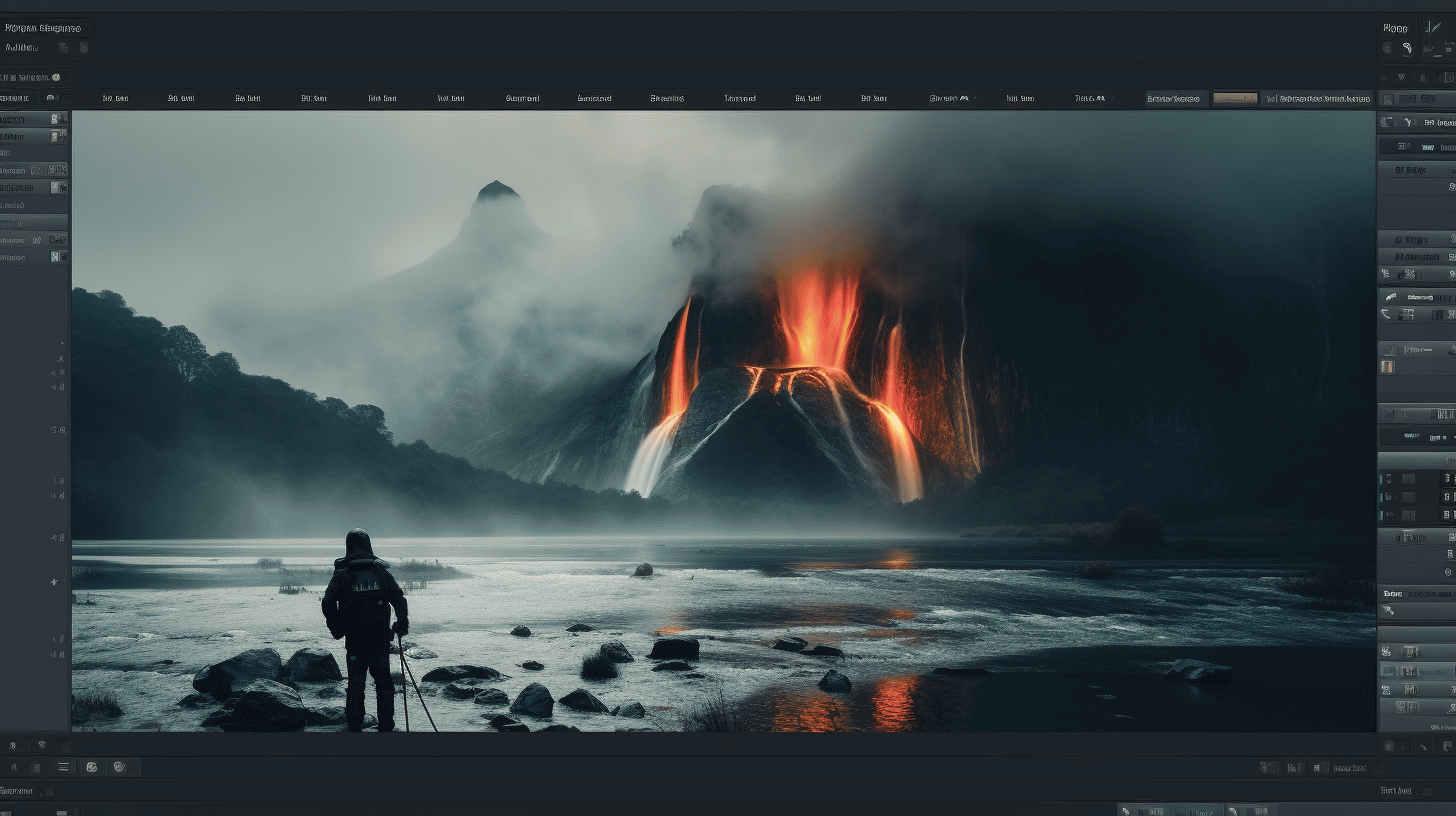In today’s digital age, visual content has become an essential tool for photographers to showcase their skills and expand their creative horizons. While photography remains an integral part of their craft, many photographers have recognized the power of video as a medium to share their stories and capture the essence of a moment in a way that static images cannot.
Video editing software has emerged as a valuable asset for photographers looking to venture into the world of videography. This software allows them to bring their photographs to life, adding movement, sound, and visual effects to create stunning visual narratives. With a multitude of options available in the market, choosing the right video editing software can be a daunting task. But fear not, as this article delves into the essential features and considerations that photographers should keep in mind when selecting video editing software. So, strap in and get ready to navigate the exciting world of video editing software for photographers.
In today’s digital age, photography has become more than just capturing moments with a camera. It has evolved into a multifaceted art form that encompasses various mediums, including video. As a photographer, you may be wondering why video editing is important for your craft. Well, let me tell you why!
Enhancing Storytelling
One of the primary reasons why video editing is crucial for photographers is its ability to enhance storytelling. While a single photograph can tell a compelling tale, a well-edited video can take your audience on a captivating journey. By combining different shots, adding transitions, and incorporating music or narration, you can create a narrative that leaves a lasting impact on viewers. Video editing allows you to play with pacing, build tension, and evoke emotions, resulting in a more immersive and engaging visual experience.
Showcasing Creativity and Skills
By embracing video editing techniques, photographers can expand their creative horizons and showcase their skills in a whole new light. Video editing enables you to experiment with different visual effects, color grading, and compositing techniques, allowing you to add your personal touch to the final product. Whether you’re looking to create stunning time-lapse sequences, implement intricate motion graphics, or try your hand at experimental film-making, video editing opens up a realm of possibilities for you to express your artistic vision.
Creating Dynamic Content
In today’s fast-paced digital landscape, static visuals can sometimes fall flat in capturing and retaining viewers’ attention. However, by incorporating video editing into your repertoire, you can create dynamic content that stands out from the crowd. Whether it’s for social media platforms, websites, or presentations, videos have the power to grab the viewer’s attention and keep them engaged. By seamlessly blending photography and videography through editing techniques, you can create visually captivating content that leaves a lasting impact on your audience.
Looking to boost your photography skills with video editing techniques? Check out this article for tips and insights on how video editing can take your photography game to the next level.
So, if you’re a photographer aiming to push the boundaries of your craft, embracing video editing is a natural next step. By enhancing storytelling, showcasing your creativity and skills, and creating dynamic content, video editing allows you to create visually stunning and emotionally impactful pieces that truly resonate with your audience. Embrace the power of video editing and unlock a whole new world of possibilities for your photography journey.
In today’s digital era, video editing software has become an essential tool for content creators, vloggers, and even casual users who want to enhance their videos. Whether you’re a professional filmmaker or just someone who likes to create fun videos for social media, finding the right video editing software can make a world of difference in the final product. But with so many options available in the market, how do you choose the one that’s perfect for you?
When considering video editing software, there are several key features that you should keep in mind. These features can greatly impact your editing experience and the quality of your final videos. Let’s dive into some of the most important ones:
User-friendly Interface
One of the most crucial aspects of video editing software is its user interface. After all, you don’t want to spend hours figuring out how to navigate through a complex and clunky interface. A user-friendly interface allows you to focus on the creative aspect of editing, rather than getting bogged down by confusing menus and buttons. Look for software that offers a clean and intuitive interface, with easy-to-understand controls and a logical workflow. This will ensure that you can quickly and efficiently edit your videos without any unnecessary hassle.
Versatility and Range of Tools
Video editing is a creative process, and you want your software to provide you with the necessary tools to bring your vision to life. A versatile video editing software should offer a wide range of tools and effects, allowing you to experiment and express your creativity fully. Look for features like filters, transitions, audio editing capabilities, customizable text overlays, and advanced color grading options. The more tools and options available to you, the more possibilities you’ll have to create the perfect video.
Compatibility with Different Devices
In today’s mobile-centric world, it’s crucial to consider the compatibility of the video editing software with different devices. You may want to edit your videos on your computer, but also be able to make quick edits on your smartphone or tablet while on the go. Look for software that is compatible with multiple operating systems and supports seamless syncing between devices. This will provide you with the flexibility and convenience to edit your videos wherever you are, whenever inspiration strikes.
Quality of Output
Ultimately, the quality of the video after editing is of utmost importance. You want your videos to look professional and visually appealing, whether you’re sharing them online or showcasing them on a big screen. Pay attention to the output options offered by the software, such as different video formats, resolutions, and aspect ratios. Additionally, look for software that supports high-quality rendering and exporting, ensuring that your videos will retain their sharpness and clarity even after the editing process.
By considering these key features – a user-friendly interface, versatility of tools, compatibility with different devices, and the quality of output – you can make a well-informed decision when choosing video editing software. Keep in mind that each person’s needs and preferences may vary, so it’s essential to find the software that aligns with your specific requirements and creative goals.
Remember, the right video editing software can empower you to unleash your creativity and take your videos to the next level. So don’t rush the decision-making process. Take your time, do your research, and choose the software that will help you turn your vision into a reality.
With the rise of video content across social media platforms, the demand for efficient and user-friendly video editing software has never been greater. Whether you’re a content creator, a vlogger, or simply someone looking to spice up their videos, having the right tools can make all the difference. When it comes to video editing software, the choice often boils down to free versus paid options. But which is the better choice?
The Appeal of Free Software
Free video editing software, as the name suggests, comes at no cost to the user. This is undoubtedly one of its biggest advantages, especially for beginners or those on a tight budget. Some popular free video editing software options include iMovie (for Mac users), DaVinci Resolve, and Shotcut. These offerings typically provide basic editing tools, such as trimming, splitting, and adding transitions. They may also come with a range of pre-designed templates and effects to enhance your videos.
The Advantages of Paid Software
While free software might offer basic editing tools, paid software often provides more advanced features and professional-grade tools. For those looking to take their video editing skills to the next level, investing in paid software can be a worthwhile choice. Paid options like Adobe Premiere Pro, Final Cut Pro, and Sony Vegas Pro offer a wide array of features, including multi-track editing, color correction, and advanced special effects. These tools provide greater flexibility and control over your videos, allowing you to create more polished and professional-looking content.
Finding the Right Balance
Ultimately, the choice between free and paid video editing software depends on your needs and goals. If you’re just starting out and need to experiment with basic editing techniques, free software can be an excellent starting point. However, if you aspire to produce high-quality videos and want access to more advanced features, investing in a paid software package might be the better choice.
It’s worth noting that many paid software options also offer free trial periods or limited versions, allowing you to test them out before committing to a purchase. This can be a useful way to determine whether the additional features and functionality provided by paid software are worth the investment for you.
In the end, the key is to find the right balance between your budget, desired features, and skill level. Whether you choose free or paid video editing software, the most important thing is to have fun with your creations and let your creativity shine through!
Note:
For a comprehensive guide on the best video editing software options available, check out this list.
With the rise of digital technology, many photographers have found themselves drawn to the world of videography. Making the leap from capturing still images to capturing moving ones can be an exciting and fulfilling transition. However, it’s important to recognize that videography requires a unique set of skills and techniques. In this article, we’ll explore the challenges photographers may encounter as they embark on this new journey and discuss how video editing software can help navigate these obstacles.
Learning New Techniques
Transitioning from photography to videography involves more than just pressing a record button. It requires a shift in mindset and the acquisition of additional technical skills. Here are some key areas where photographers often need to adapt and learn:
- Storytelling: While photography captures a single moment, videography allows for the creation of narratives and visual storytelling. Photographers must develop a keen eye for identifying compelling storylines and incorporating them into their videos.
- Composition: Composition in videography is different from composing a single still image. Photographers need to consider factors such as movement, framing, and shot sequencing to create visually engaging videos.
- Camera Movement: Videography introduces the use of camera movement to enhance storytelling. Photographers need to become familiar with techniques such as panning, tracking, and dolly shots to add dynamism and depth to their videos.
- Audio: Sound is a crucial component of videography. Photographers must learn to capture high-quality audio or incorporate a suitable soundtrack to complement the visuals.
The Role of Video Editing Software
While the transition from photography to videography may initially seem daunting, video editing software can act as a valuable ally. These tools provide photographers with the means to bring their creative vision to life through post-production:
- Seamless Integration: Many video editing software options, such as Adobe Premiere Pro or Final Cut Pro, offer a smooth transition from photography software like Adobe Lightroom or Photoshop. Photographers can leverage their existing knowledge of these programs while delving into the world of video editing.
- Powerful Editing Capabilities: Video editing software empowers photographers to manipulate their footage in various ways. They can trim clips, apply color grading, add transitions, and incorporate visual effects to enhance the overall cinematic experience.
- Audio Editing: Video editing software also provides tools to edit audio tracks, ensuring that sound quality matches the visual elements. Photographers can remove background noise, adjust volume levels, and synchronize audio with the visuals seamlessly.
- Workflows and Efficiency: Video editing software streamlines the editing process with features like multi-track timelines, keyboard shortcuts, and batch processing capabilities. This allows photographers to work more efficiently and meet deadlines without compromising creativity.
In conclusion, the transition from photography to videography can be an exciting and rewarding journey. While it may require learning new techniques and adapting to a different creative process, the availability of video editing software can greatly facilitate this transition. By familiarizing themselves with the unique aspects of videography and harnessing the power of editing tools, photographers can successfully navigate the challenges and unlock their full potential in the world of moving images.
Mastering a new skill, such as navigating through a video editing software, often comes with a learning curve, and video editing is no exception. While some software might be more intuitive and user-friendly, others can be quite complex and require a significant learning investment. However, with dedication and practice, anyone can become proficient in video editing.
Here are some key points to understand about the learning curve when it comes to video editing software:
- Intuition and Ease of Use: Different video editing software vary in their user interfaces and features. Some software, like Adobe Premiere Pro and Final Cut Pro, are known for their professional-grade capabilities but may have a steeper learning curve due to their extensive range of features. On the other hand, simpler software like iMovie or Filmora might be more intuitive and easier to learn for beginners. It’s essential to consider your skill level and the complexity of your projects when choosing a video editing software.
- Practice Makes Perfect: The more you practice using a particular video editing software, the more familiar and comfortable you will become with its functionalities. Dedicate some time regularly to experimenting with different tools and effects to understand how they work. Engage in online tutorials and courses that can provide you with practical tips and techniques to enhance your editing skills.
- Online Communities and Support: Connecting with other aspiring video editors can be a valuable resource for learning. Online communities such as forums and social media groups dedicated to video editing can offer advice, troubleshooting tips, and even guidance on specific techniques or software features. Participate in these communities to learn from experienced editors and share your own progress and experiences.
- Stay Updated: Video editing software is continually evolving, with new updates and features being introduced regularly. It’s crucial to stay updated with the latest versions of your chosen software to take advantage of new tools and improvements. Subscribe to newsletters, follow relevant websites, and join software forums to keep yourself informed about updates and best practices.
In conclusion, mastering video editing software takes time and effort, but it is a skill that anyone can develop with practice. The learning curve may vary depending on the software’s complexity, but by dedicating yourself to learning and staying engaged with the editing community, you’ll be well on your way to becoming a proficient video editor.
Learn more about video editing software and explore the options available to you based on your skill level and project requirements.
In conclusion, choosing the right video editing software can greatly enhance a photographer’s creative journey into the world of videography. By investing in user-friendly software with a wide range of tools and features, photographers can seamlessly transition from capturing still images to crafting captivating videos.
Photographers should consider the compatibility of the software with different devices to ensure that their work is accessible and viewable on various platforms. Additionally, the quality of the output should be a priority, as it directly impacts the final result and the viewer’s experience.
While there are both free and paid options available, it’s important for photographers to assess their needs, budget, and long-term goals before making a decision. Free software can be a good starting point for beginners, but paid software offers advanced features and technical support that can take their videography skills to the next level.
Understanding the learning curve associated with video editing is crucial. While it may seem daunting at first, with practice, patience, and the right resources, photographers can acquire the necessary skills to confidently edit and produce professional-quality videos.
It’s clear that video editing has become an essential skill for photographers in today’s digital age. By leveraging the power of video, photographers can tell their stories in a more dynamic and engaging way, reaching a wider audience and expanding their creative horizons.
So, whether you’re a professional photographer looking to add video to your repertoire or an enthusiast looking to explore the world of videography, investing in the right video editing software is a crucial step towards achieving your creative goals. Happy editing!
Frequently Asked Questions
- What are some popular video editing software options for photographers?
Some popular video editing software options for photographers are Adobe Premiere Pro, Final Cut Pro, DaVinci Resolve, iMovie, and Filmora.
- Do I need video editing software as a photographer?
Having video editing software as a photographer can be beneficial, especially if you want to expand your creative reach and offer video services. It allows you to edit and enhance videos, add effects, transitions, and music, and create visually compelling content.
- What factors should I consider when choosing video editing software?
When choosing video editing software as a photographer, consider factors such as ease of use, available features, compatibility with your computer system, support and tutorials, cost, and the specific video editing capabilities you require.
- Can I use free video editing software for my photography projects?
Yes, there are several free video editing software options available that can be used for photography projects, such as iMovie (for Mac users) and FilmoraGo (for mobile devices). These can be great for beginners or those with basic editing needs.
- Is it necessary to learn video editing as a photographer?
While learning video editing is not mandatory for photographers, it can be advantageous in today’s digital landscape. Many clients look for photographers who can provide both photography and videography services. Expanding your skill set can open up new opportunities and increase your marketability.




0 Comments